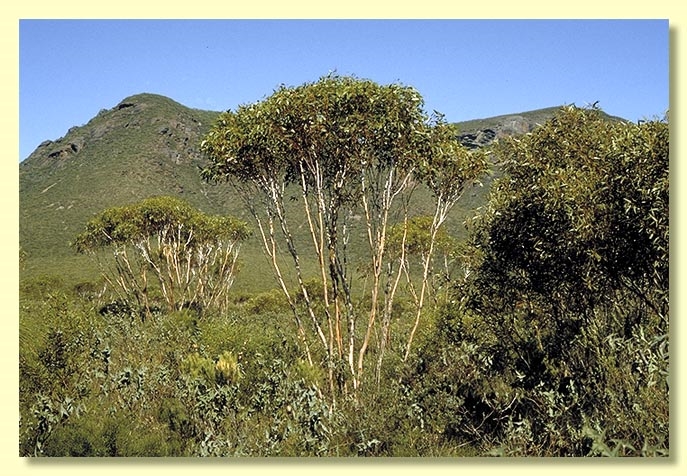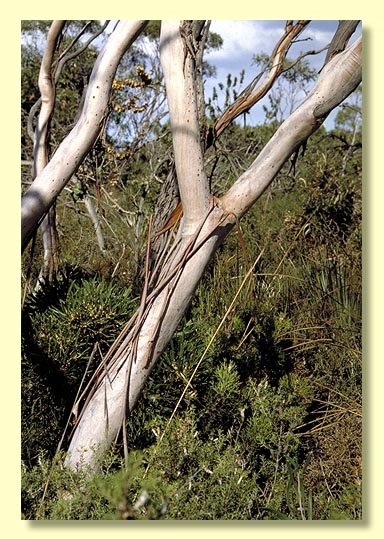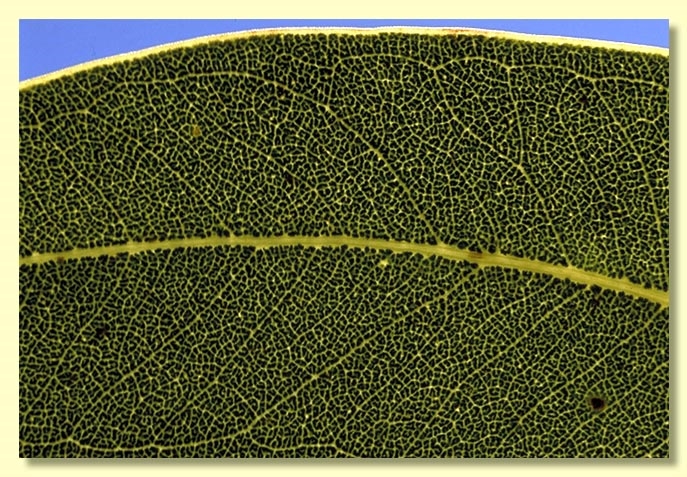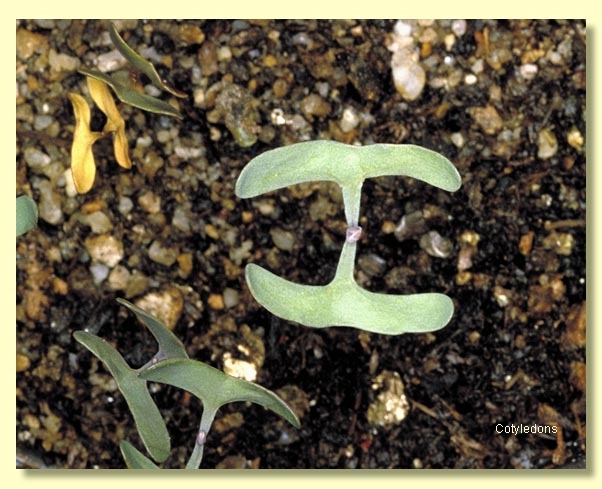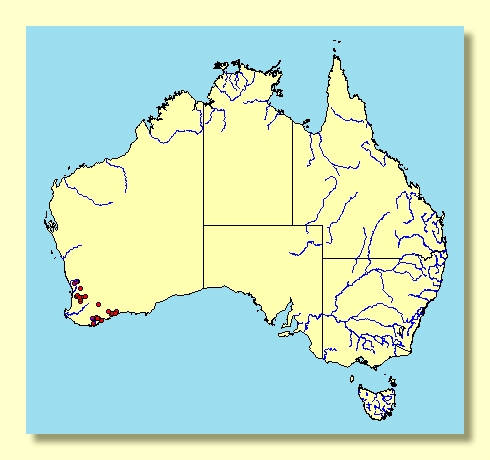Eucalyptus | Symphyomyrtus | Bisectae | Destitutae | Decurvae
Euclid - Online edition
Eucalyptus decurva
Bark smooth throughout, pale whitish grey over salmon and yellow-green, surface may be powdery.
Branchlets copiously white-waxy over rich dark red; lacking oil glands in the pith.
Juvenile growth (coppice or field seedlings to 50 cm): stems rounded in cross-section, non-glaucous at this stage; juvenile leaves opposite and sessile at least until 0.7 m tall, oblong to broadly elliptic becoming ovate, 3.5–10.5 cm long, 3–7 cm wide, base amplexicaul to truncate or rounded, margin subcrenulate or entire, apex rounded apiculate to pointed, dull greyish green.
Adult leaves alternate, petioles 1–2 cm long; blade lanceolate to falcate, 5–10.5 cm long, 1.2–2.5 cm wide, base tapering to petiole, margin entire, apex finely acuminate, green, glossy, side-veins greater than 45° to midrib, reticulation dense to very dense, intramarginal vein close to margin, oil glands apparently absent.
Inflorescence axillary unbranched, pendulous, peduncles 1–2.5 cm long, buds 7 per umbel, pedicels 0.4–1 cm long. Mature buds almost cylindrical to narrowly pyriform (0.5–1 cm long, 0.4–0.5 cm wide), creamy white (but not glaucous), scar present, operculum flattened to rounded and apiculate or conical, rarely beaked, stamens inflexed, anthers cuboid, versatile, dorsifixed, dehiscing by longitudinal slits, style long and straight, stigma blunt to rounded, locules 3 or 4, the placentae each with 4 vertical rows of ovules. Flowers white.
Fruit pendulous, pedicellate (pedicels 0.3–1.2 cm long), almost spherical or rarely barrel-shaped, 0.7–1.1 cm long, 0.7–1 cm wide, disc descending, valves 3 or 4, near rim level or enclosed.
Seeds grey-brown, 1.8–3 mm long, flattened-ovoid, dorsal surface smooth but usually furrowed longitudinally, hilum ventral.
Cultivated seedlings (measured at ca node 10): cotyledons bisected, the lobes broad and widely spreading (almost T-shaped), slightly glaucous; stems more or less rounded in cross-section, glaucous; leaves sessile and opposite for at least 14 nodes, orbicular to broadly oblong-elliptical, 4–8.5 cm long, 3–6.5 cm wide, base amplexicaul, apex rounded and apiculate or slightly emarginate, glaucous.
Flowering has been recorded in April, June, August and October.
A mallee endemic to Western Australia, found scattered in heathlands in coastal and subcoastal areas from south of New Norcia and Clackline, Brookton and North Bannister in the Darling Range south to the Stirling Range extending south-east to Fitzgerald River National Park where found only at Mt Maxwell and East Mount Barren. The bark is smooth, branchlets glaucous and the adult leaves glossy, dark green, with very dense reticulation and are apparently glandless.
Eucalyptus decurva belongs in Eucalyptus subgenus Symphyomyrtus section Bisectae subsection Destitutae because the buds have two opercula, the bisected cotyledons are coarsely lobe and almost T-shaped and the branchlets have no oil glands in the pith.
E. decurva is closely related to only one other species, E. doratoxylon, and together they form series Decurvae. They share the unusual cotyledon features, habit, densely reticulate glandless leaves and pendulous inflorescences but differ in E. doratoxy having opposite leaves in the mature crown and beaked opercula.

